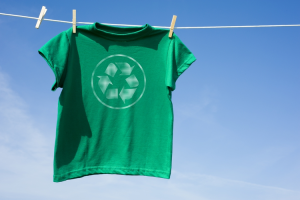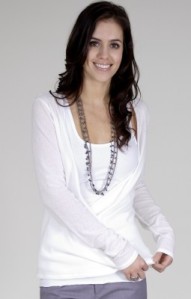 Info Share Courtesy news.thomasnet.com
Info Share Courtesy news.thomasnet.com
Year to year, season to season, fads go in and out of style faster than turning pages in the latest issue of Vogue. With over $500 billion being spent every year on advertising, it’s no wonder that the fashion industry has been able to sell the idea that happiness can be bought in the form of a new, trendy outfit.
Spurred on by the strong urges of consumerism and flashy marketing campaigns, many people all over the world eagerly buy into this concept. This has resulted in a constantly churning cycle of fast fashion supply and demand. In order to make room in their closets for the latest styles, consumers tend to discard the preceding styles even if they’ve only worn the garment a handful of times.
While some consumers try to recycle their clothes by either donating them to charities, upcycling or using them as cleaning rags in their home, the vast majority of these garments do not see a second life. According to Global Fashion Agenda, an organization dedicated to various fashion sustainability efforts, 73% of the world’s clothing ends up either incinerated or in landfills.
When deposited in landfills, natural and semi-synthetic fibres like cotton and rayon break down and produce the harmful greenhouse gas methane as they degrade. In order to make the fabrics, these fibres are often processed using toxic chemicals like dyes and bleaches, which can potentially seep into groundwater. Burning unwanted clothing isn’t really a better alternative, as it distributes these toxins into the air we breathe. Synthetic fibres such as polyester present the same problems but have the added downside of taking hundreds of years (or more) to biodegrade.
The crazy part is that most of these materials are easily repurposed or recycled. Although most frivolous waste occurs at the end of a garment’s lifecycle, many leaders in the fashion world are determined to do something about it.
Closed Loop Couture
The concept of closed-loop fashion has grown in popularity in the past few years, increasing the industry’s overall interest in circularity and garment recycling. Major fashion organizations such as the Sustainable Apparel Coalition and the Ellen MacArthur Foundation have been instrumental in bringing the issue to the forefront of the fashion industry.
There’s also the Copenhagen Fashion Summit, an annual event organized by Global Fashion Agenda. This event brings fashion industry leaders and sustainability experts together to discuss sustainability practices, as well as develop strategies for implementing these practices. At the 2017 Summit, Global Fashion Agenda implored brands and retailers to sign their “2020 Circular Fashion System Commitment” agreement.
The goal of the agreement is to precipitate a wave of meaningful action toward accomplishing more sustainable recycling systems through education, knowledge sharing, collaboration, and public declarations of commitments to closed-loop fashion systems.
As of May 2018, 94 fashion companies ranging from commercial retailers like Target and H&M to designer brands such as Tommy Hilfiger and J. Cavallo have signed the agreement. This number represents an astounding 12.5% of the global fashion market.
The first step of the commitment stipulates that signees must set circularity targets for themselves to achieve. These targets are allocated across four action points:
- Circular design
- Material collection
- Reuse
- Recycling
Furthering increasing the stakes, Global Fashion Market also publicly lists the companies that have signed but haven’t followed up the specified requirements.
Substance Over Style: Circularity in Practice
Circular design is accomplished when all levels of a garment’s life cycle are considered and thoroughly analyzed during early planning phases; These cycles include the manufacturing, usage, and disposal of the garment.
New York-based company ADAY exemplifies this on multiple levels by adhering to minimalist principles and designing versatile garments in evergreen styles. They also work with engineers to locate and develop durable, technically advanced fabrics, many of which are derived from recycled materials. They create their designs with the intention of instilling a less-is-more mindset in their customers.
Other companies are focusing their efforts on collecting discarded garments in order to reuse, resell, or repurpose them. Some designers, such as French designer Marine Serre, are using sustainability and recycling as part of their creative process. Her design collection is comprised of hybrid garments with a futuristic flair using remnants of vintage scarves and shirts.
Eco-conscious H&M has even developed an incentive program for their customers: bring your unwanted apparel to one of their stores – regardless of condition or brand – and get a voucher. H&M then hands the clothing over to their business partner I:CO, which sorts through it all and separates the clothes to be resold as second-hand clothes, reused as other products like cleaning cloths or recycled into textile fibres for industrial applications.
H&M also partnered with the Hong Kong Research Institute of Textiles and Apparel (HKRITA) to invest in the development of processes that can separate the materials that comprise blended textiles and isolate them so they can be made into new yarns.
Wardrobe Staples: The Future Outlook of Sustainable Fashion
This series has covered only a few examples of the many ways that the fashion industry is working towards sustainability. Although the road ahead is long and fraught with many obstacles, the fashion community has been enthusiastic and ambitious in their pursuits. Ephemeral fads may come and go, but sustainability will soon be the most fashionable trend of all.
Image Credit: Mike Flippo/Shutterstock.com

